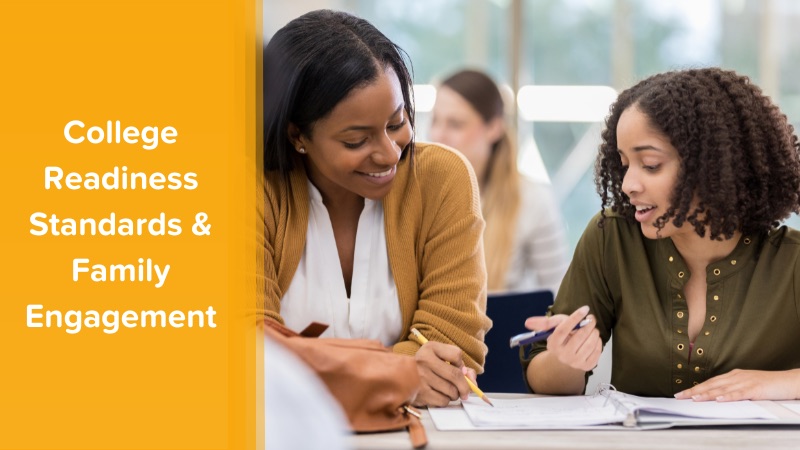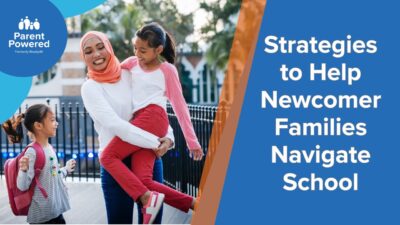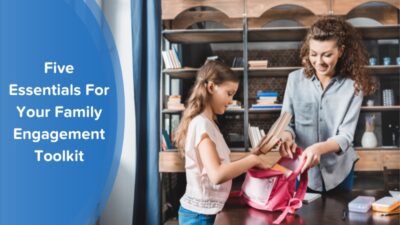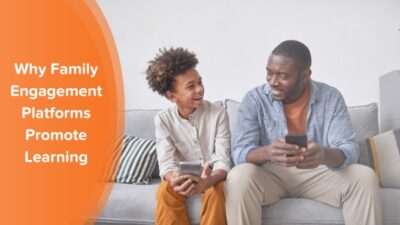By Maren Madalyn, contributing writer
Career and college readiness standards are growing in popularity among K12 educators. These frameworks pinpoint those skills and practices that high school students need to learn in order to be ready for ever-evolving modern workplaces and the educational pathways that lead to them.
But what exactly do these standards entail? What does a college-ready teen look like? And more importantly — what supports can educators leverage to ensure every high school student graduates prepared for what comes next?
Let’s take a closer look at the goals and structures of college and career readiness standards. Along the way, we’ll discover a not-so-secret ingredient in the recipe for cultivating a college-or-career-ready student: high school family engagement.
Exploring career and college readiness standards for high schoolers
Many states across the U.S. have adopted specific roadmaps to guide educators in developing students’ college and career readiness. These resources often integrate academic coursework, social-emotional development, and practical life skills that play important roles in postsecondary environments.
As the ACSD explains, “Foundational content knowledge provides students with flexibility. More targeted knowledge and skills prepare them for postsecondary success in specific areas. By focusing on both, secondary schools can enable all students to prepare for successful futures.”
Some states, like California and Texas, have formally mapped grade-specific standards to college readiness standards across a student’s entire learning journey, from kindergarten to high school. The table below explores a few examples of such standards designed to help educators track student progress with building literacy skills necessary for the workplace or college-level coursework.
| Sample Standards | California (High School) | Texas (High School) |
| Reading | Craft & Structure 4. Interpret words and phrases as they are used in a text, including determining technical, connotative, and figurative meanings, and analyze how specific word choices shape meaning or tone. | ELA.II.A.1 Use effective reading strategies to determine a written work’s purpose and intended audience. |
| Writing | Text Types & Purposes 1. Write arguments to support claims in an analysis of substantive topics or texts using valid reasoning and relevant and sufficient evidence. | ELA.I.A.2 Generate ideas and gather information relevant to the topic and purpose, keeping careful records of outside sources. |
| Speaking & Listening | n/a | ELA.III.B.3 Plan and deliver focused and coherent presentations that convey clear and distinct perspectives and demonstrate solid reasoning |
Another common model is the Individualized Learning Plan (ILP), which 38 states have implemented as part of a nationwide effort to set up students for success after high school.
According to the National Collaborative on Workforce & Disability For Youth, a quality ILP combines “documentation of post-secondary plans aligned with career goals and… college and career readiness skills [a student] has developed” with processes that connect schoolwork with out-of-school career opportunities, give students access to career exploration supports, and weave self-reflection into career prep.
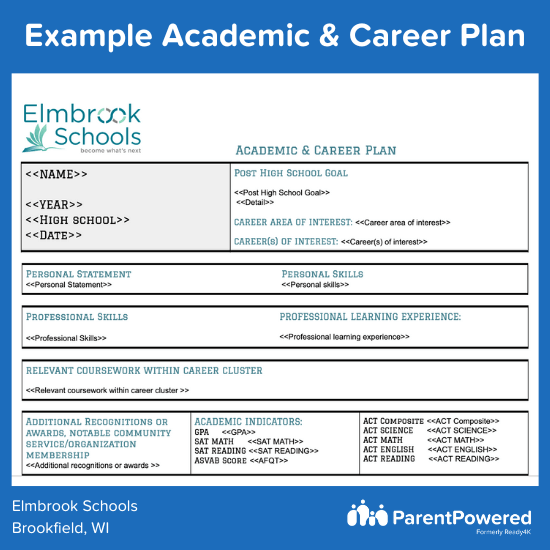
No matter which models educators embrace, the intent remains the same: ensure today’s teens are prepared to become tomorrow’s adults, whether they pursue further education or enter the workforce after high school graduation.
But educators aren’t the only ones who help prepare adolescents for postsecondary success — families play just as essential a role. High school family engagement is a key pillar to that foundation from which an individual student launches into their future.
The untapped potential of family engagement in postsecondary readiness
It may sound counterintuitive for some educators to see “high school” and “family engagement” in the same sentence. Does it even exist?!
The good news is, yes! Family engagement does exist at the secondary level. In fact, it needs to be part of the high school experience if teens are to develop those essential skills key to the college or career pathways they wish to pursue.
Challenges families and students face with career and college planning
However, families face clear challenges with finding opportunities to nurture their teens’ readiness for college or a career after graduation.
Researchers with Georgetown University examined the biggest barriers hiding future graduates’ progress towards securing good jobs. Three in particular stood out:
- Rising costs for postsecondary education
- Limited access to high-quality work-based learning opportunities
- Lack or limited availability of comprehensive counseling and career navigation services
Other factors were also found to impact the entire family, and many are often beyond their full control to change. These include socioeconomic status, access to basic needs and resources, and exposure to a variety of career experiences (which in turn can influence a student’s exploration of opportunities).
Last, financial aid for college or internship application processes can be very complex. Families may not have the full knowledge or resources to support their teens with successfully navigating them.
The good news is that educators can take tangible steps to weave families into the college and career readiness support structure. This is exactly why ParentPowered expanded its family engagement programs to high school — to scaffold and map caregivers onto models like ILPs and college readiness standards.
In this way, all teens have a chance to thrive as adults in “the real world” beyond school.
Inviting families into college and career preparation efforts
Let’s start with understanding the resources that schools typically employ (if available) to assist students with meeting college and career readiness standards. We’ll also explore how caregivers can provide support, too.
School Counseling
First come school counselors. Countless research studies have shown the positive impact of school counseling services on everything from improving students’ social emotional skills to increased feelings of safety and belonging. When it comes to college or career planning for high school students, these adults are also invaluable.
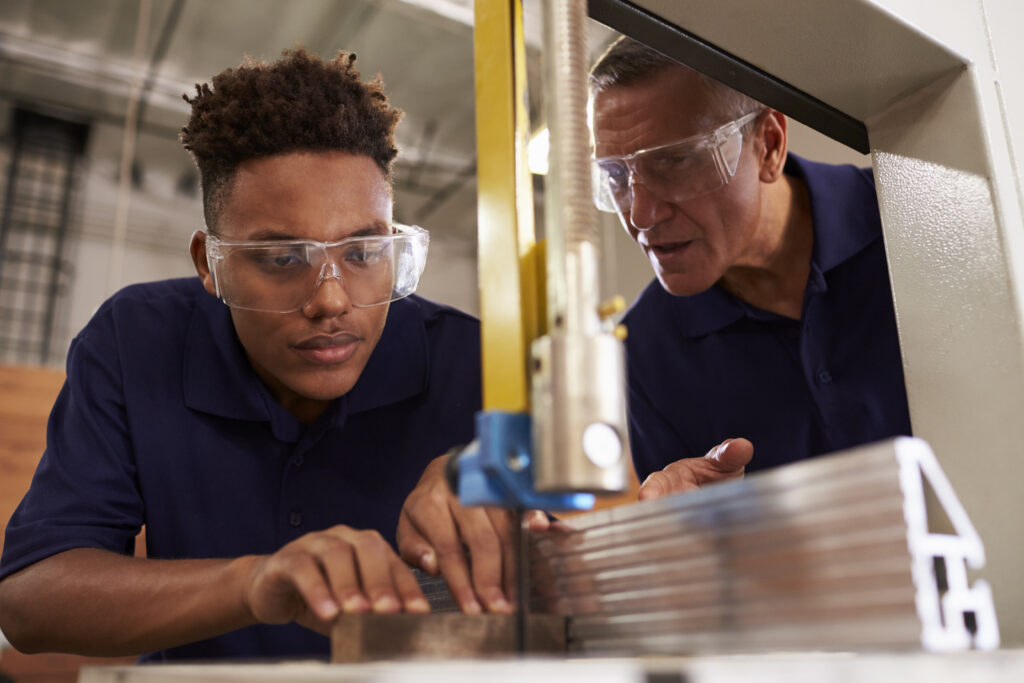
However, not all students have the same level of access to these supports, with the average counselor managing a caseload of over 400 teens at a single school. Families can become additional allies to counselors in facilitating teens’ self-reflection, exploration, and goal-setting activities related to their future.
College or Career Prep Programs
Advanced Placement classes, career and technical education units, dual enrollment — all of these programs can help teens prepare for more rigorous and challenging courses in college or to build tangible skills necessary for particular career pathways.
Here again, caregivers play a supporting role as their adolescent participates in such opportunities, if available. With developmentally appropriate support — when caregivers are copilots, not captains, in teens’ academic pursuits — students are more engaged in forward-planning activities like career exploration and more (Dietrich & Kracke, 2009).
Real-World Experiences
Parents and caregivers in the school community are often great resources for bringing real-world experiences to high school students. Mentorship programs, internships, and other hands-on experiences with particular careers or educational pathways can greatly clarify a teen’s future plans and help them become more career ready.
Three tips for caregivers to prep teens for college, career, and beyond
Look for ways to engage families as career and college readiness allies? These tips, resources, and sample ParentPowered activities are a great place to start. Share them with caregivers and colleagues in your community today!
1. Critical conversations
Did you know that a student’s future wage earnings at age 26 increase 0.8% for each meaningful career conversation they experience in middle and high school (OECD, 2017)? This small, but powerful action can make a huge difference for an individual student.
In contrast, the Bill & Melinda Gates Foundation found that among students who dropped out of high school, some actually had passing grades and visions for their future. And yet no one had connected with them to discuss how their current school work connected with their ambitions.
Families are excellent resources for facilitating these crucial conversations about postsecondary plans. Strong communication skills and a trusting relationship between teens and caregivers reinforce the impact of these discussions.
Download and share our communication guides specifically designed to help families build strong communication with their adolescents, setting the stage for critical conversations about their futures.
2. Self-reflection, aspirations, and goal setting
Self-reflection is an important skill for any life-long learner, especially in high school. As teens determine what kind of future they want to pursue, and whether that future involves college or other postsecondary education, they benefit from recognizing their own strengths and interests.
Here too, families can model self-reflection and offer their students prompts to practice these skills. Here’s an example ParentPowered message that offers specific, easy-to-ask questions to cultivate self-reflection. Rather than directly intervening in a teen’s process, these activities help families hold space to allow adolescents come to their own conclusions.
Take look at these additional resources for families and educators to support high schoolers with goal-setting and getting career ready:
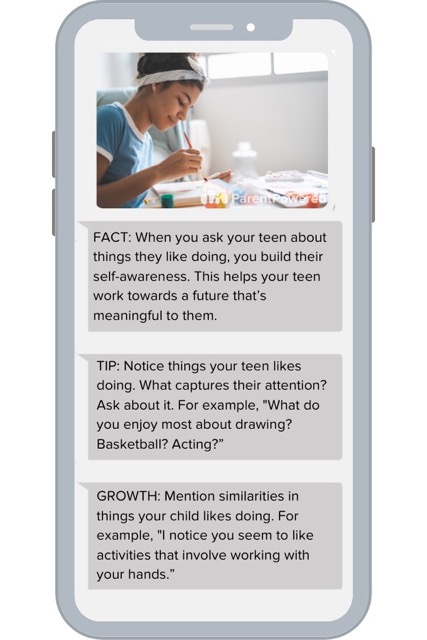
- In this article, the Boys & Girls Club of America breaks down the value and impact of goal-setting for teens.
- Powerful Youth documents introductory steps for teens to practice their goal-setting skills as part of self-reflection about their futures and dreams.
- The Bureau of Labor Statistics offers an interactive portal to help teens explore future work or education opportunities based on self-identified interests.
3. Education and training research
Even if a teen knows exactly what future job they want after high school graduation, odds are high that they will need some kind of additional education or vocational training to successfully secure that role. Researching training and education requirements for particular careers gives high schoolers clear indicators of what skills they need to journey down those paths.
However, it can be challenging for teens and their families to know where or how to research these requirements, especially for careers beyond a family’s realm of experience or knowledge. Educators can coach families with accessible strategies for supporting career and education research.
Here are several tools available (mostly for free) online to aid teens and families with their college or career research:
- BigFuture, a portal provided by the College Board, helps teens research various educational pathways and jobs.
- CareerOneStop offers tools that help adolescents and young adults to search for career opportunities based on past employment and experiences.
- Common Sense compiled and rated a series of apps and websites designed to guide career exploration with high schoolers.
Set the entire family up for postsecondary success with ParentPowered
ParentPowered’s family engagement programs are designed to support students to thrive from birth through grade 12 — “growing up” alongside kids and their families. And we know the amazing impact that families can have on a student’s future as an adult in the world.
This impact is so crucial that an entire domain of the framework behind our high school curriculum is devoted to engaging caregivers in students’ college and career readiness.
Join an upcoming info session to learn more about how we coach families as postsecondary preparation allies to future high school graduates.
About the author
Maren Madalyn has worked at the intersection of K12 education and technology for over a decade, serving in roles ranging from counseling to customer success to product management. She blends this expertise with fluid writing and strategic problem-solving to help education organizations create thoughtful long-form content that empowers educators.

